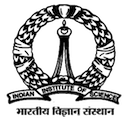Introduction to elastic and plastic deformation; Elementary dislocation theory and twinning; Strengthening mechanisms; Fracture; Fatigue; Creep. Although this course focuses more on crystalline materials, the essential information related to mechanical behaviour of polymers will also be provided.
This course has now evolved to supplement the first undergraduate level course on mechanical behaviour. This course focuses on failure mechanisms in materials, such as fatigue, creep and fracture. In addition, this is also the first, basic laboratory course where undergraduate students learn how to experimentally evaluate various mechanical properties of engineering materials. One of the main goals of the course is to inform students about various components (hardware and software) of an equipment. A student is supposed to become an independent user of the equipments following successful completion of the course. The course consists of following experiments:
Lab: Tensile test of various materials (low carbon steel, copper, aluminium, HPDE polymer). Compression test (zinc, brass, copper). Macro- and micro-hardness test (effects of grain size and carbon content), creep (Sn-based, lead-free solders). Rotating bending fatigue testing (steel). Charpy impact test (high carbon steel, copper).
Theory: Fracture, fatigue and creep. Data and error analysis. Workings of an equipment (including sensors and controllers).
This course has been specially designed for those students, who did not get a chance to study FEM during undergrad, but want to use FEM as a tool to gain some insight into their project/research problems. The syllabus includes the following:
Quick recap of relevant mathematical concepts, equations of equilibrium and compatibility conditions (structural problem) and stress (Airy) function. Philosophy of FEM. Fundamentals of FEM, such as concepts of discretization, interpolation functions, assembly of equations and solution. Application of FEM for solving differential equations using Galerkin method and variational equations using Rayleigh - Ritz method. 1-D, 2-D and 3-D example problems in elasticity and heat transfer. Solving linear and non-linear structural, thermal and electrical problems using a commercial FEM software (mostly, ANSYS).
A Short Course on crystal plasticity (including basic usage of DAMASK) by Professor Philip Eisenlohr of Michigan State UniversityThis course gives a brief overview of various modeling techniques, such as Monte-Carlo, DFT, MD, Phase Field, FEM, etc., which are often used in materials science and engineering. Professor Abhik Choudhury and I (used to) teach this course together, wherein I taught FEM component of the course.
The FEM component of the course involves both basic theory and training on ANSYS software. The syllabus for FEM includes the following:
Theory: Philosophy of FEM; Galerkin Method; Solving 1-D heat transfer and solid mechanics problem; Formulation of generic finte elements; errors and convergence.
Tutorial: Compression test of elastic-plastic material; Elastic fracture mechanics; Transient indentation of elastic-plastic material
This segment includes semiconductor materials, hard and soft magnetic materials, polymeric materials, biomaterials and electronic ceramics. Common applications for these materials and current technological challenges and trends are also be highlighted.
